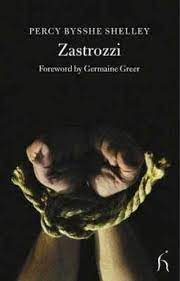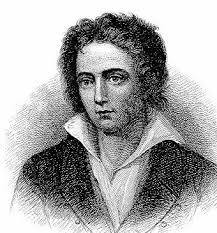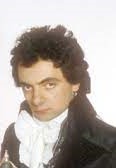
© Heperus Books
The genesis of Frankenstein; or, the Modern Prometheus (1818) is well-known. It was written by Mary Shelley in 1816 while she and her husband, Romantic poet Percy Bysshe Shelley, were staying at the Villa Diodati by Lake Geneva as guests of Percy’s fellow Romantic poet Lord Byron. Mary was 18 years old at the time and Frankenstein sprang out of a resolution by the group to each write a ‘ghost story’. This was largely because the wet and dreary weather that summer prevented them from doing much outdoors. Mary duly concocted Frankenstein, which of course is one of the seminal novels of the horror genre. Also, while it certainly wasn’t the world’s first horror story, there’s a good case to be made that it was the first work of science fiction. Victor Frankenstein, after all, assembles his creature out of pieces of dead bodies and brings it to life using technology, not magic.
Actually, a joke I’ve seen on social media runs along these lines: Mary Shelley went off and invented science fiction so that she didn’t have to endure listening to Byron and Percy Bysshe Shelley talking shite all summer.
I think Frankenstein is an amazing book, though a logically flawed one. The creature is totally inarticulate when he comes into the world, but soon picks up the ‘lingo’ by spying on a room where a foreign woman is receiving language lessons and secretly learning alongside her. Before long he’s able to read and understand a copy of John Milton’s Paradise Lost (1667) and spends five whole chapters talking non-stop at his understandably flummoxed creator. As someone who’s spent a good bit of his career teaching the English language to people, that’s a result I could only dream of.
Later, Victor Frankenstein retreats to a remote island in the Orkneys where he manages to find the body parts for, and assemble, a female mate for the creature without being noticed by the island’s inhabitants. He then ends up adrift in a boat that takes just one night to float all the way from the Orkneys to the coast of Ireland, and there the creature frames him for the murder of his best friend, Henry Clerval, whose body is discovered on the same coastline. We last heard tell of Clerval in the central Scottish city of Perth, so how did the creature get his body to Ireland and know where to dump it? After being freed, Frankenstein is collected by his elderly father, who makes a journey from Geneva to Ireland even though earlier we’d been told he was too infirm to travel between Geneva and Ingolstadt in Bavaria.
Yes, the fact that Mary Shelley was only 18 at the time does show through occasionally in Frankenstein’s plotting. You get the impression she’s impatient to get on with the story, and move from one event to the next, and like any impulsive teenager isn’t too bothered about the logistics of how exactly she manages this.
But hey… I’ve recently read Percy Bysshe Shelley’s short novel Zastrozzi (1811), which he had published at the age of 18 (though he wrote it a year earlier). I have to say that compared with the scribblings of her teenaged husband, the teenaged Mary Shelley that’s suggested by Frankenstein is a model of good sense, decorum, level-headedness and maturity.
I’ve nothing against a good gothic potboiler and Zastrozzi begins in good-gothic-potboiler fashion. The mysterious but obviously villainous Zastrozzi of the title, and his two henchmen Bernardo and Ugo, abduct the book’s hero, Verezzi, from an inn near Munich and drive him off in a coach – or ‘chariot’ as the young Shelley insists on calling it. They transport him while he’s asleep and the implication is that he’s been drugged, though this isn’t made clear – you’re left wondering of Verezzi is just an abnormally heavy sleeper.
Verezzi wakes up to find the three rogues imprisoning him inside a cavern – “Verezzi beheld the interior of this cavern as a place where he was never again about to emerge – as his grave.” – and Zastrozzi gets to inform him: “Resistance is futile.” Yes, that’s the catchphrase of the Borg, from Star Trek: The Next Generation (1987-94). Subsequently, a violent thunder-and-lightning storm tears asunder the rock above the cavern and exposes it to the elements. This doesn’t provide Verezzi with an opportunity to escape, as you might expect, but leaves him with a ‘burning fever’ and ‘delirious with a despairing illness’. Verezzi is going to suffer a lot of despairing illnesses during this book.
Deciding it’d be a mistake to keep the ailing Verezzi in the cavern, Zastrozzi, Bernardo and Ugo convey him instead to a cottage ‘on an immense heath, lonely, desolate, and remote from other human habitation.’ Verezzi recovers and, this time, does manage to escape, though with his three persecutors giving chase. He makes it to the Bavarian city of Passau, where he meets and is offered refuge by an old woman called Claudine, who’d suffered the death of her son just the previous week. The work done by her son had provided Claudine with a little income and she’s quick to invite Verezzi to take the son’s place in return for board and lodgings in her humble cottage,

While Verezzi finds a temporary hiding place with Claudine, Zastrozzi, Bernardo and Ugo, still hunting him, become lost in a forest. In a baffling plot-twist, they stumble across ‘a large and magnificent building whose battlements rose above the lofty trees’, seemingly by accident. This, it transpires, is the suitably gothic abode of Matilda, the noblewoman who’s masterminded the scheme to abduct and imprison Verezzi. Matilda, you see, is madly in love with Verezzi, but Verezzi is unfortunately madly in love with, and betrothed to, someone else – a lady called Julia, who’s currently resident in Italy. Matilda will consider committing any crime to thwart the relationship between Verezzi and Julia.
Meanwhile, it’s hinted, and in the book’s final pages confirmed, that Zastrozzi is not simply Matilda’s loyal minion. He has his own reasons for wanting Verezzi to suffer.
And here, the plot seems to stop – or disappear up its own arse – for a long time. Verezzi crosses paths with Matilda, whom he likes if doesn’t actually love, and about whose nefarious scheme he knows nothing. She persuades him to leave Claudine’s cottage and stay at her chateau in the forest for a while. There he falls critically ill, again – Matilda telling him a malicious lie about Julia being dead has something to do with it. And the book’s most interesting character, Zastrozzi himself, fades into the background, leaving the reader to wade through pages of melodramatic blather where Verezzi and Matilda indulge in many ‘ecstasies of melancholia’, ‘floods of tears’, ‘gentle sighs’ and, yes, ‘heaving’ of ‘bosoms’. There’s also much wandering done in the local forest, with the word ‘cataract’ cropping up as frequently as the word ‘chariot’ does elsewhere. Now that he believes Julia to be deceased, will Verezzi get over his grief, succumb to temptation, and do the business with that duplicitous minx Matilda? Honestly, I couldn’t have cared less.
At least things pick up later. The action relocates to Venice, Zastrozzi becomes prominent again, and the book’s two most annoying characters are unexpectedly killed off 20 pages before the end. Matilda and Zastrozzi end up on trial for their lives, in front of a horde of torture-loving Inquisitors. Matilda crumbles and finds religion: “God of mercy! God of heaven… my sins are many and horrible, but I repent.” However, the atheistic and – surprise! – Byronic Zastrozzi is made of tougher stuff and goes to his doom unrepentantly and defiantly.
I’d be more generous towards the book – which was, after all, the work of a 17-year-old – if the plot was less flabby. It needed to centre less on the tormented, wimpy and seriously illness-prone Verezzi and more on Zastrozzi, who has some dynamism and agency. Indeed, the book’s most memorable scene has Matilda out in the forest, sitting on a granite boulder, while a fearsome storm rages around her. Zastrozzi is suddenly revealed to her by a flash of lightning: “His gigantic figure was again involved in pitchy darkness as the momentary lightning receded. A peal of crashing thunder again madly rattled over the zenith, and a scintillating flash announced Zastrozzi’s approach, as he stood before Matilda.” It’s uncannily reminiscent of the scene in Frankenstein where Victor encounters his creation during a tempest in the Alps. Mind you, it’s a shame that Zastrozzi’s most notable feature here – his gigantic stature – isn’t actually mentioned by the author, or remarked on by the other characters, when he appears in the novel’s early pages. This gives the impression that somewhere along the way he had a sudden and impressive growth-spurt.
The foreword to my edition of Zastrozzi was penned by Germaine Greer, who’s unexpectedly indulgent of Shelley’s excesses. She views the helpless, fever-stricken Verezzi, at the mercy of the conniving, dominating but not undesirable Matilda, as symbolic of the fixation the very young Shelley had for his mother: “…Shelley’s mother, who was more in sympathy with him than his father, was from all accounts a very beautiful woman… As the youngest of five children, Shelley’s infant passion for his mother probably went largely unrequited; his best chance of getting her to himself was when he was in the throes of one of his childhood illnesses which were, like Verezzi’s, ‘of a nervous or spasmodic nature’.”
However, while I struggled through Zastrozzi’s purpler patches, I found myself less in sympathy with Germaine Greer and more in sympathy with Rowan Atkinson’s Edmund Blackadder, who in the 1987 TV series Blackadder the Third said witheringly of the Romantic poets: “…there’s nothing intellectual about wandering around Italy in a big shirt, trying to get laid.”

© BBC






